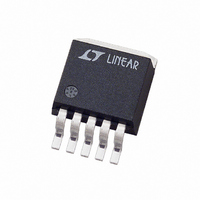LT1185CQ#TR Linear Technology, LT1185CQ#TR Datasheet - Page 6

LT1185CQ#TR
Manufacturer Part Number
LT1185CQ#TR
Description
IC REG LDO ADJUSTABLE 3A DDPAK-5
Manufacturer
Linear Technology
Datasheet
1.LT1185CTPBF.pdf
(16 pages)
Specifications of LT1185CQ#TR
Regulator Topology
Negative Adjustable
Voltage - Output
-2.5 ~ -25 V
Voltage - Input
-4.2 ~ -35 V
Voltage - Dropout (typical)
0.67V @ 3A
Number Of Regulators
1
Current - Output
3A
Current - Limit (min)
Adjustable
Operating Temperature
0°C ~ 125°C
Mounting Type
Surface Mount
Package / Case
TO-263-5, D²Pak (5 leads + Tab), TO-263BA
Lead Free Status / RoHS Status
Contains lead / RoHS non-compliant
Available stocks
Company
Part Number
Manufacturer
Quantity
Price
6
APPLICATIO S I FOR ATIO
LT1185
Amplifier A2 is used to generate an internal current through
Q4 when an external resistor is connected from the REF
pin to ground. This current is equal to 2.37V divided by
R
The regulator will current limit via A4 when the voltage
across R2 is equal to the voltage across R1. These two
resistors essentially form a current “amplifier” with a gain
of 350/0.055 = 6,360. Good temperature drift is inherent
because R1 and R2 are made from the same diffusions.
Their ratio, not absolute value, determines current limit.
Initial accuracy is enhanced by trimming R1 slightly at
wafer level. Current limit is equal to 15kΩ/R
D1 and I
REF pin current drops below 2µA. A current less than 2µA
through Q4 causes the +input of A5 to go low and shut
down the regulator via D2.
A3 is an internal current limit amplifier which can override
the external current limit. It provides “goof proof” protec-
tion for the pass transistor. Although not shown, A3 has
a nonlinear foldback characteristic at input-output volt-
ages above 12V to guarantee safe area protection for Q3.
See the graph, Internal Current Limit in the Typical Perfor-
mance Characteristics of this data sheet.
Setting Output Voltage
The LT1185 output voltage is set by two external resistors
(see Figure 2). Internal reference voltage is trimmed to
2.37V so that a standard 1% 2.37k resistor (R1) can be
used to set divider current at 1mA. R2 is then selected
from:
for R1 = 2.37k and V
suggested values of 1% resistors are shown.
LIM
R2 = V
. It generates a current limit sense voltage across R1.
R2 =
1
V
5.2V
12V
15V
are used to guarantee regulator shutdown when
OUT
5V
6V
OUT
(V
– 2.37k
OUT
V
U
– 2.37) R1
REF
REF
= 2.37V, this reduces to:
U
R2 WHEN R1 = 2.37k
W
2.67k
2.87k
3.65k
9.76k
12.7k
LIM
U
.
Output Capacitor
The LT1185 has a collector output NPN pass transistor,
which makes the open-loop output impedance much
higher than an emitter follower. Open-loop gain is a direct
function of load impedance, and causes a main-loop
“pole” to be created by the output capacitor, in addition to
an internal pole in the error amplifier. To ensure loop
stability, the output capacitor must have an ESR (effective
series resistance) which has an upper limit of 2Ω, and a
lower limit of 0.2 divided by the capacitance in µF. A 2µF
output capacitor, for instance, should have a maximum
ESR of 2Ω, and a minimum of 0.2/2 = 0.1Ω. These values
are easily encompassed by standard solid tantalum
capacitors, but occasionally a solid tantalum unit will have
abnormally high ESR, especially at very low tempera-
tures. The suggested 2µF value shown in the circuit
applications should be increased to 4.7µF for – 40°C and
– 55°C designs if the 2µF units cannot be guaranteed to
stay below 2Ω at these temperatures.
Although solid tantalum capacitors are suggested, other
types can be used if they meet the ESR requirements.
Standard aluminum electrolytic capacitors need to be
upward of 25µF in general to hold 2Ω maximum ESR,
especially at low temperatures. Ceramic, plastic film, and
monolithic capacitors have a problem with ESR being too
low . These types should have a 1Ω carbon resistor in
series to guarantee loop stability.
The output capacitor should be located close to the regu-
lator (≤ 3") to avoid excessive impedance due to lead
inductance. A six inch lead length (2 • 3") will generate an
extra 0.8Ω inductive reactance at 1MHz, and unity-gain
frequency can be up to that value.
For remote sense applications, the capacitor should still be
located close to the regulator. Additional capacitance can
be added at the remote sense point, but the remote
capacitor must be at least 2µF solid tantalum. It cannot be
a low ESR type like ceramic or mylar unless a 0.5Ω to 1Ω
carbon resistor is added in series with the capacitor. Logic
boards with multiple low ESR bypass capacitors should
have a solid tantalum unit added in parallel whose value is
approximately five times the combined value of low ESR
capacitors.
1185ff















